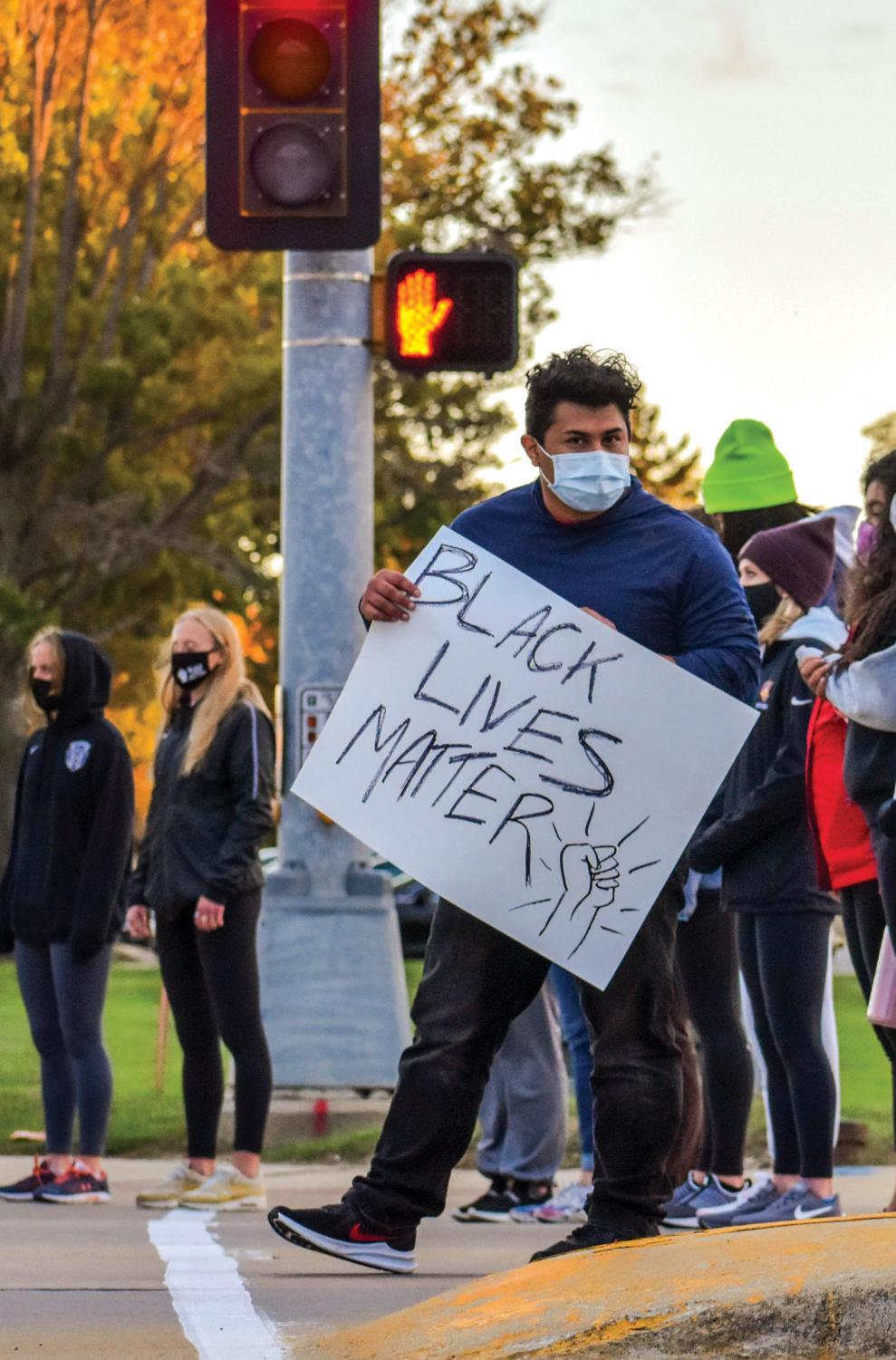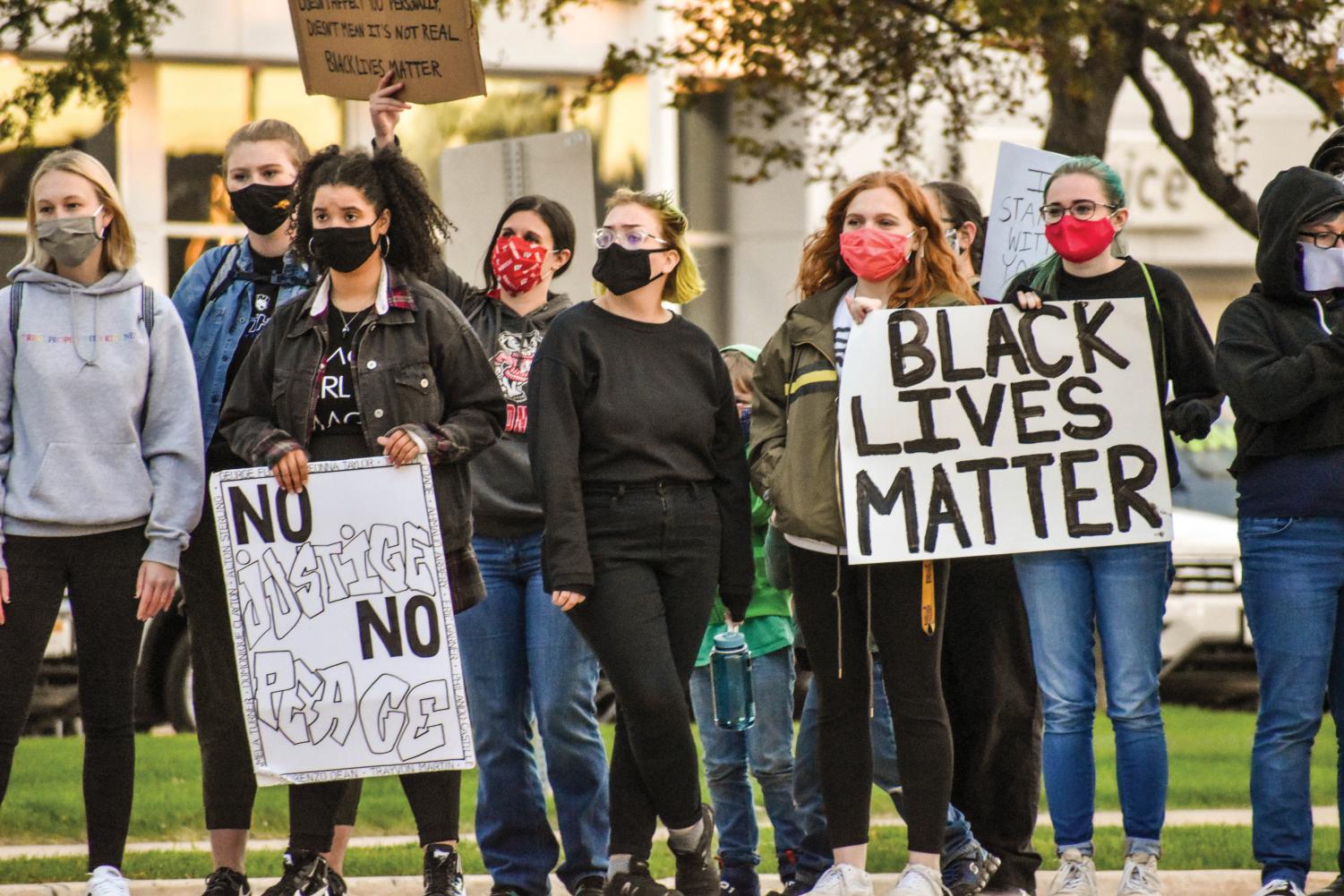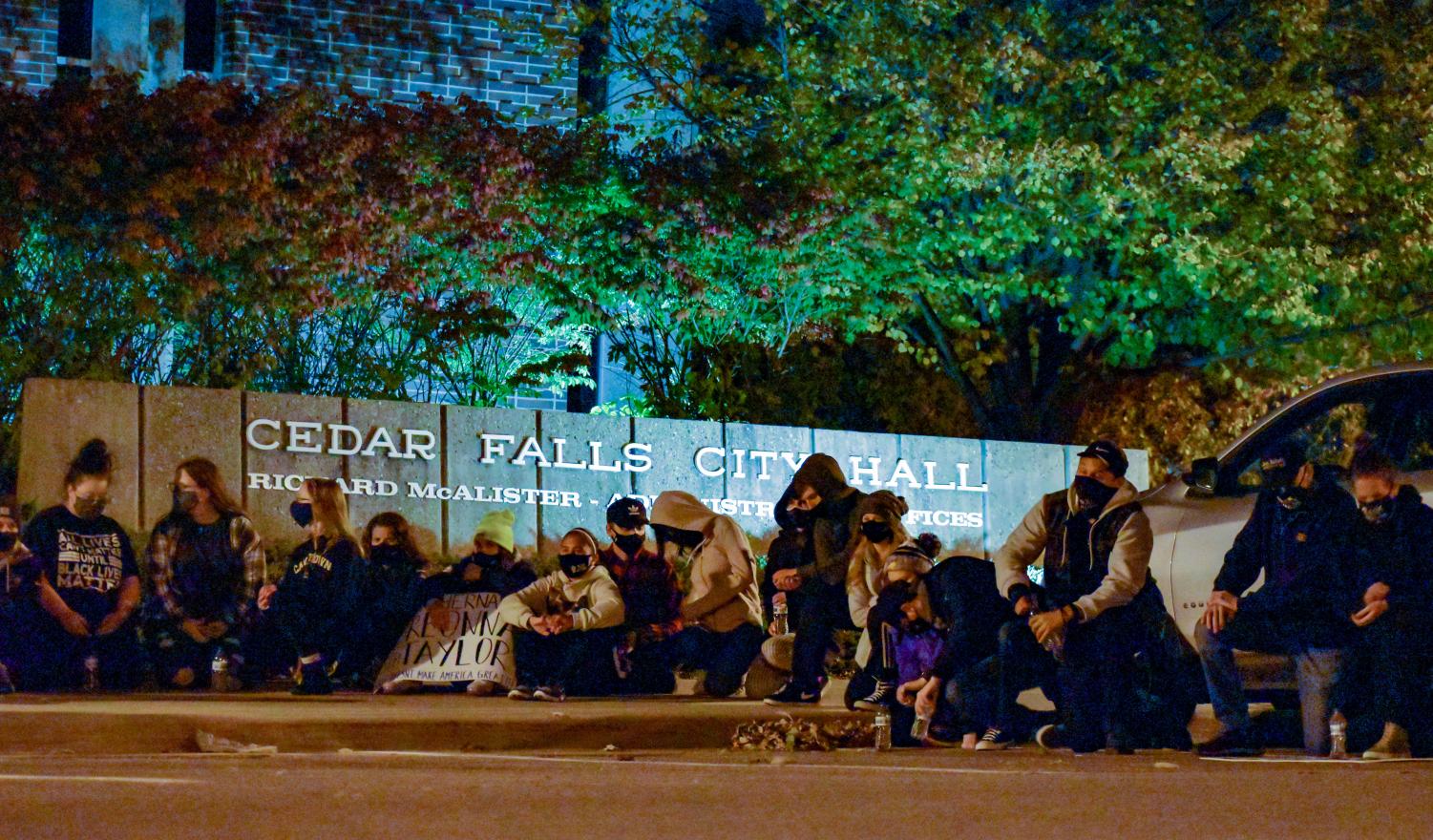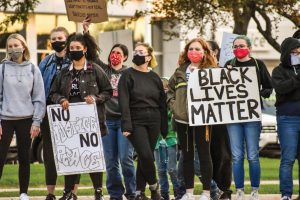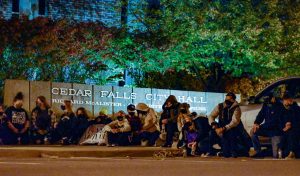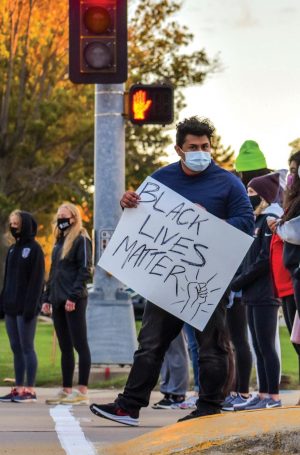UNI community marches for justice
Oct 5, 2020
On Thursday, Oct. 1 at 6 p.m. UNI students, faculty and community members gathered at 3025 S Main Street in Cedar Falls to begin “A March for Justice.” The event was organized by Cedar Valley Black Lives Matter, a predominantly student-led group which was recently launched.
After opening remarks by student leaders, protesters flooded Main Street and marched to the intersection of University and Main. Here, student leaders and Black students spoke on their experiences being Black in America. Cries of “No justice, no peace,” “Say her name: Breonna Taylor” and “These racist cops have got to go” echoed through the streets.
The protesters’ final destination was Cedar Falls City Hall, nearly two miles from where the march began, where organizers presented a list of demands for the Cedar Falls City Council. These included the decriminalization of marijuana, the creation of a citizen’s community review board to review misconduct and bias claims made against police officers, the firing of officers accused of domestic violence and excessive use of force, the abolishment of paid administrative leave for officers under investigation and transparency and accountability for the city’s police budget.
Cedar Valley BLM coordinators also demanded that the City Council state a public apology on the racist history of the city, as they believe denouncement of its racist past is necessary if Cedar Falls ever intends to be a safe and welcoming community for people of color.
After several speeches from march attendees, protesters marched back down University and ended the march where it began.
Max Tensen, senior secondary math education major, was one of the major organizers of the event. He said his goal in organizing the march was “to put people together and uplift Black voices.”
“As a white person, I know it’s not necessarily my place to be a leader, especially in this movement that is not about white people, but I
recognize that I’m involved in NISG, and I have built pretty good connections all across the university in multiple capacities,” he said. “I knew I was pretty far-reaching and I could utilize that.”
Reflecting on the march after the fact, Tensen was pleased with the turnout.
“I don’t think any of us expected it to be this big,” he said. “There were students; there were community members; there were professors; there were faculty and there were just families that walked out of their house and participated.”
Though the march remained peaceful, opposition to the march was also evident.
“Unfortunately, there were some aggressors: folks with Confederate flags yelling racial slurs at our protesters. So, in that capacity, it’s disappointing,” Tensen said. “But part of the reason we do these protests is to draw attention to that. Like, this is a real, actual thing. Racism is not dead, it is still very much alive, and it’s here and existing in the Cedar Falls area.”
Freshman biology and biochemistry major Salima Diallo, who was involved in the march, said she was happy with how protestors remained peaceful in spite of those trying to incite violence.
Though Thursday’s march focused on the greater Cedar Valley area, UNI students have spoken out in recent months against injustices they feel the school has perpetrated against Black students and students of color.
Sophomore psychology major Nawal Rai said that he feels UNI is “definitely lacking on a lot of things” in relation to racial justice issues.
“I think they try, but I don’t think they try enough to make students of color feel included. I personally don’t feel included in a lot of things here at UNI,” he said. “I feel like most of what (the university) puts out is mostly just a formality.”
Diallo agreed with this sentiment.
“The school uses social media to claim (they) support the Black Lives Matter movement and diversity in their student body,” she said. “They’re just using social media to put themselves out there like they care when they actually don’t do anything about it.”
Diallo and Rai also noted that UNI does not denounce or remove racist comments on their social media pages.
Tensen said he feels that the university is “wary to come out and fully support us and march with us” for fear of angering conservative donors.
“I need you out here with us,” he said, appealing to the predominantly white student body. “I need you in the streets. I need you having conversations with your family members and friends. I need you do something to fight for racial justice every single day.”
Diallo also called upon white students and community members to “use your privilege, because you have more than me.”
“I don’t have much privilege here right now. I’m a Black woman of color, cops are scared of me and I’m in a white-majority school,” she said. “Yes, Black people can do a lot, but there aren’t a lot of us on campus, and we can’t speak up for ourselves all the time. If we don’t have many white people out here trying to use their privilege to help us out, nobody’s going to hear us.”
Rai added that the first step for white citizens involves education.
“Recognize your privilege based on your identity,” he said. “We need to start educating ourselves not just on the Black Lives Matter movement, but also on the racist history of America. I think it comes down to having an open mind and having compassion for other people.”
For more information or to learn how to get involved in future events, follow @CedarValleyBLM on Twitter or Instagram.


